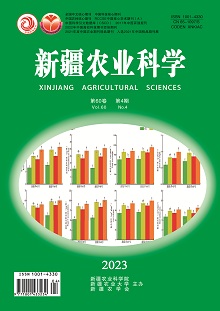【Objective】To compare the component of total flavonoids, total polyphenols and total triterpenoids and antioxidant activities of Ruoqiang Jujube after being steamed, boiled and fried in the hope of providing reference for the development and utilization of Ruoqiang Jujube,this study provides theoretical reference for further development and utilization of Ruoqiang Jujube.【Methods】The contents of total flavonoids, total polyphenols and total triterpenoids were determined by spectrophotometry, and the antioxidant activities were evaluated by DPPH scavenging ability, ABTS scavenging ability and total reducing power.【Results】The total flavonoid contents of raw, steamed, boiled and fried jujube were (2.15±0.09), (2.56±0.07), (1.7±0.08), (2.02±0.04) mg/g, respectively; The total polyphenol contents were (66.73±1.22), (46±0.97), (52.98±0.58), (47.62±0.35), respectively; The total triterpenoid contents were (35.86±0.49), (46.56±1.62), (27.01±0.71), (22.35±0.43) mg/g, respectively. In the concentration range of 0.1-25.6 mg/mL, the IC50 of DPPH free radical scavenging rate of VC, raw, steamed, boiled and fried jujube were 0.04, 2.03, 1.36, 4.97 and 2.42 mg/mL, respectively. In the concentration range of 0.125-2 mg/mL, the IC50 of ABTS free radical scavenging rate of VC, raw, steamed, boiled and fried jujube were 0.09, 0.21, 0.27, 0.52 and 0.38 mg/mL, respectively. With the increasing of concentration, the total reducing power by different processing methods also increased, and the total reducing power of steamed jujube was the highest.【Conclusion】After steaming, boiling and frying processing, the contents of total polyphenol, total flavonoids and total triterpenoid in Ruoqiang Jujube have changed. In addition to the low total polyphenol content, the contents of total flavonoids in steamed products are the highest. Steamed products also have the best antioxidant activity.

